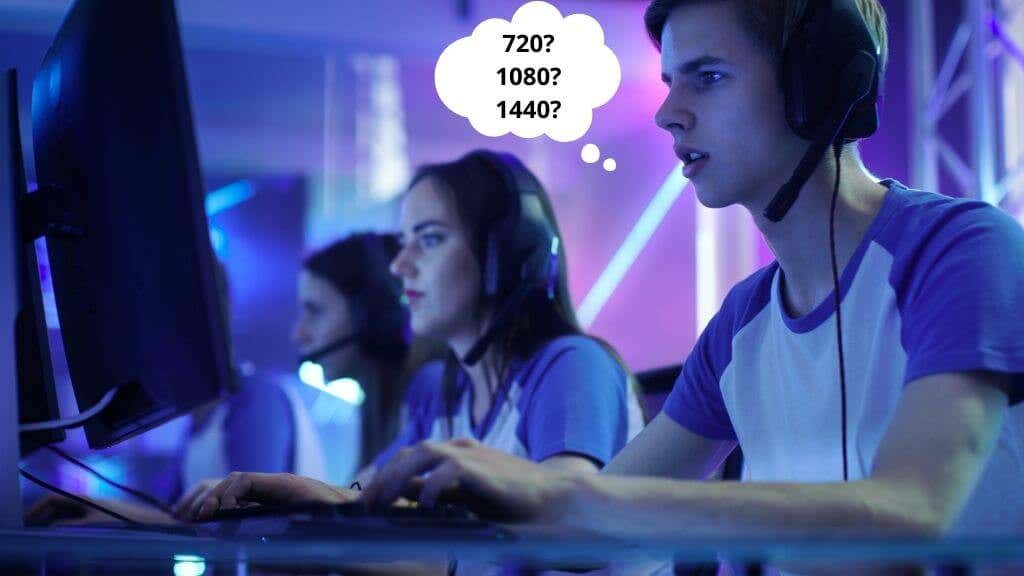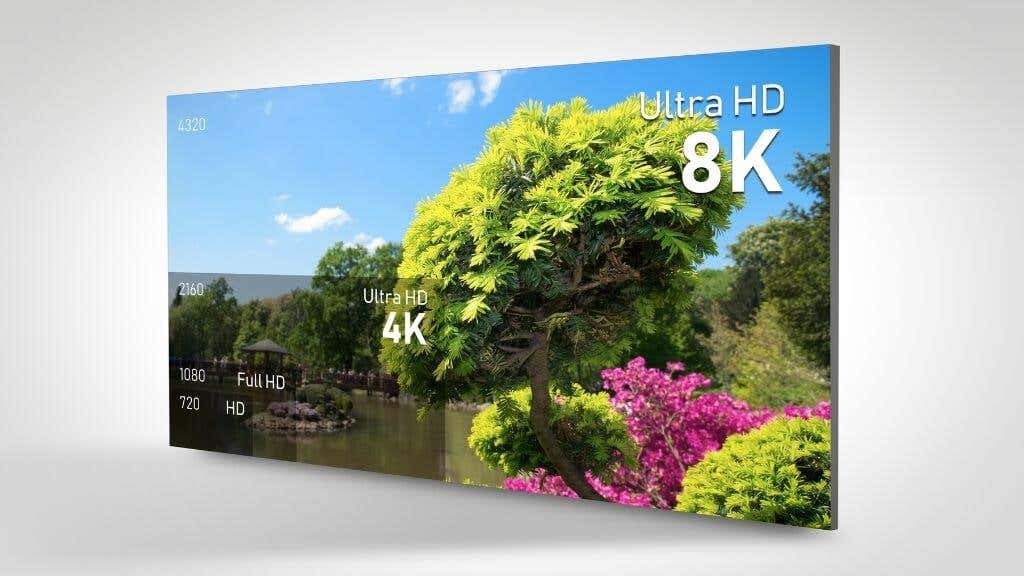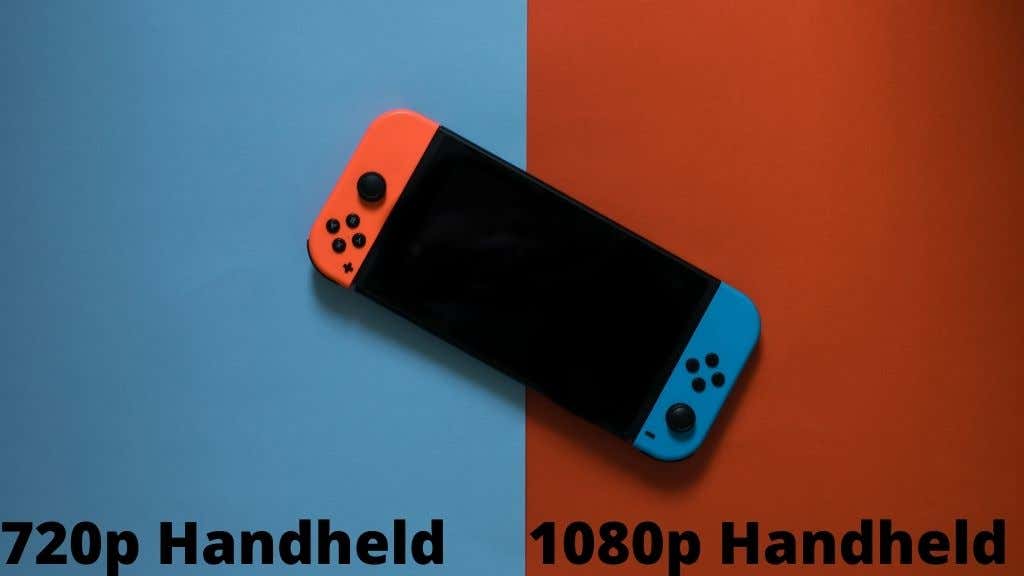What Is Resolution?
First, let’s get a quick understanding of what “resolution” is. Digital images are broken up into “picture elements” or “pixels.” Each pixel has a specific color and brightness value, and multiple pixels are arranged in a grid to form pictures. The more pixels there are in an image, the more detailed that image will be. A “low-resolution” image appears grainy, and it’s easy to see the actual pixels if you look closely. A “high-resolution” image looks smooth and sharp where individual pixels are not visible to the naked eye without magnification. Resolution is an attribute of digital media (e.g., a photo, video, or video game) and a display device such as an LCD TV.
The Native Resolution of Your Screen
Modern flat panel displays have LCD or OLED physical pixels (Liquid Crystal Displays and Organic Light-emitting Diodes), which is the display’s “native” resolution. If the on-screen image matches the native resolution exactly, then every pixel on the screen has a corresponding unique value, which constitutes an ideal situation. A mismatch between the display’s resolution and the content may lead to a process known as “scaling,” which hurts picture quality.
The Resolution of Content
As mentioned above, content has its resolution. For example, standard BluRay films have a resolution of 1080p (1920×1080). The “p” stands for “progressive”, which means that the image refreshes with every cycle of the monitor’s refresh rate. The refresh rate is the rate at which the monitor redraws the picture you see. In contrast is 1080i, an obsolete approach to image reproduction where the “i” stands for “interlaced.” Interlaced means that every screen refresh redraws the odd and even-numbered lines of pixels. A resolution like 720p or 1080p only mentions the height of the image and not its length. A 1920×1080 screen and a 2560×1080 screen are both 1080p, but one has a higher total number of pixels and a wider “aspect ratio.” The aspect ratio is the ratio between horizontal and vertical pixel lines. A 1920×1080 screen is 16 pixels wide for every nine pixels tall and is called a 16:9 screen. Video and photographic content have fixed resolutions, which means that a 720p video playing on a 1080p screen doesn’t have any more detail than a 1080p video playing on a 720p screen.
Resolution Scaling
Now, let’s define “scaling.” Imagine playing a 1080p film on a 2160p (4K) display. A 4K screen has four times the number of total pixels so that you could fit four 1080p image frames into a 2160p frame natively. That means you need to blow up a 1080p image by a factor of four to fill a 2160p screen. In practice, this works well since 1080p content divides evenly into 2160p. When such perfect division isn’t possible, scaling methods that estimate the values of pixels have to be used, which further degrades the final image. While modern scaling methods are much better at maintaining image quality, when choosing the resolution of your content, aim for either native content or content that evenly divides into the screen resolution for the best scaling results.
Dynamic Resolution and Image Reconstruction in Video Games
Unlike photos and videos, video games and other software that render real-time graphics can do so at arbitrary resolutions. For example, if you’re a PC gamer, you can choose to render a game at resolutions such as 720p, 1080p, or 1440p. Even console games offer players a limited set of choices when it comes to resolution output. However, modern games dynamically change their resolution. For example, the game might target 1440p or 2160p but render individual frames at a lower resolution to preserve game performance. The video game software itself then scales the lower resolution frame to the correct output resolution. To the player, this is usually either imperceptible or appears as a brief fuzziness in the image but doesn’t significantly impact image quality in the heat of the action.
720p vs 1080p vs 1440p: Use Cases for Each
Taking all of this information into account, which resolution is the best for what use?
720p Resolution
The 720p resolution still has a place in modern times, but that place isn’t on a large TV or computer monitor. Choose 720p only when viewing content on a mobile phone. You should pick a higher resolution for everything (including tablets), assuming that bandwidth isn’t limited. 720p is suitable when playing a video game on low-powered hardware (such as integrated graphics), but make sure you don’t have a dynamic resolution option or any image reconstruction methods to clean the image up.
1080p Resolution
1080p is the most common resolution today. Most phones offer a 1080p or better screen resolution; it’s the most common computer screen and television resolution. 1080p provides an outstanding balance between image quality, file size, bandwidth requirements, and performance. 1080p is a trivial target to reach for most modern gaming PCs and is now considered the mainstream gaming resolution target.
1440p Resolution
1440p offers a middle ground between 1080p image quality and full-on 2160p 4K. 1440p for video resolution is helpful if that’s the display’s native resolution. For gamers, 1440p offers the best mix of image quality and performance. It’s one of the main reasons high refresh rate 1440p monitors are popular among PC and console gamers.


![]()



